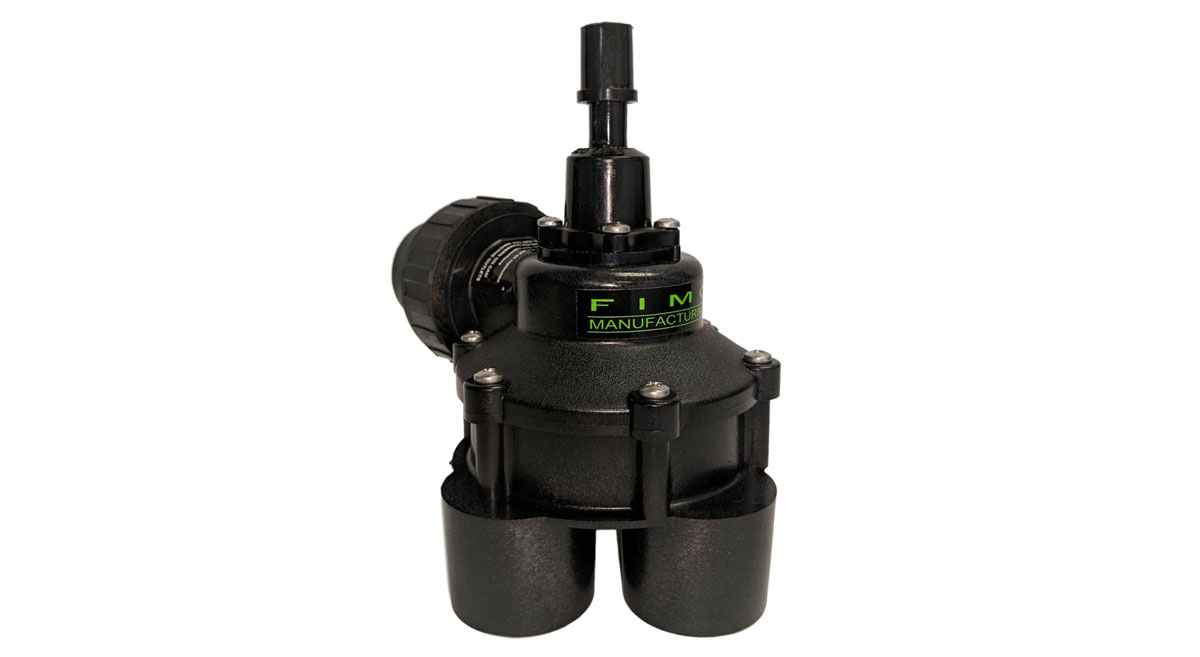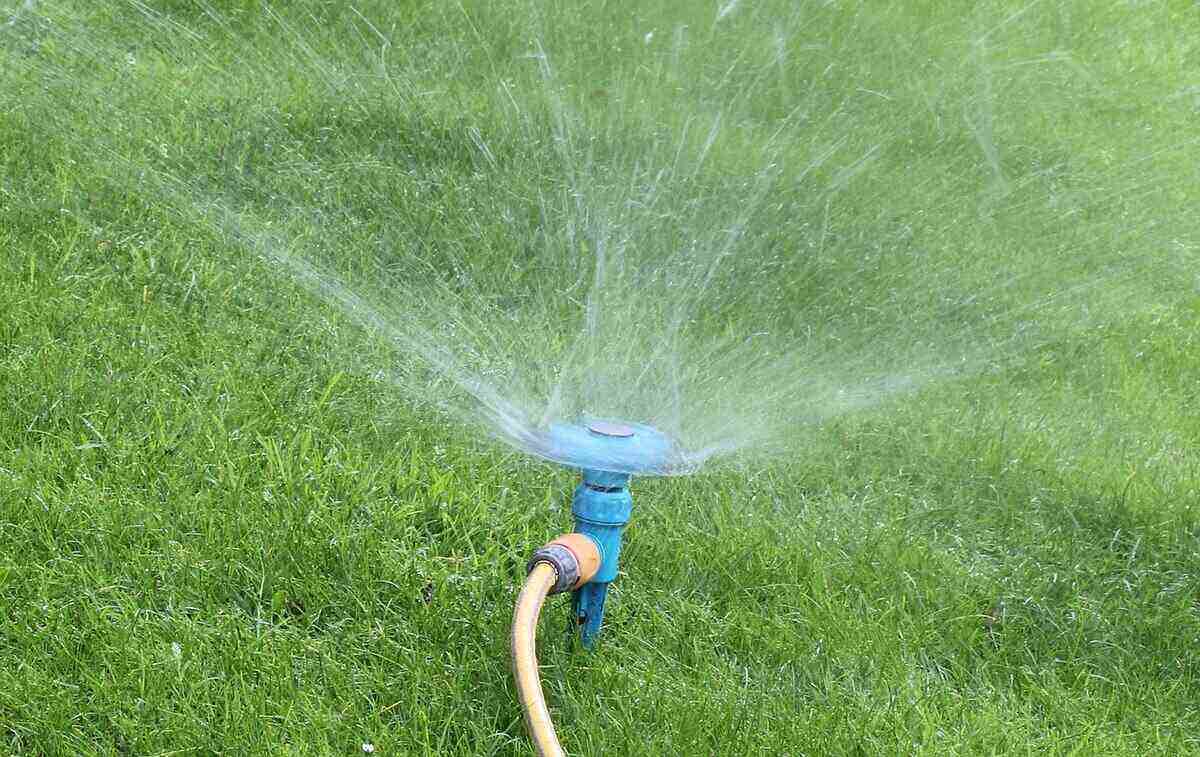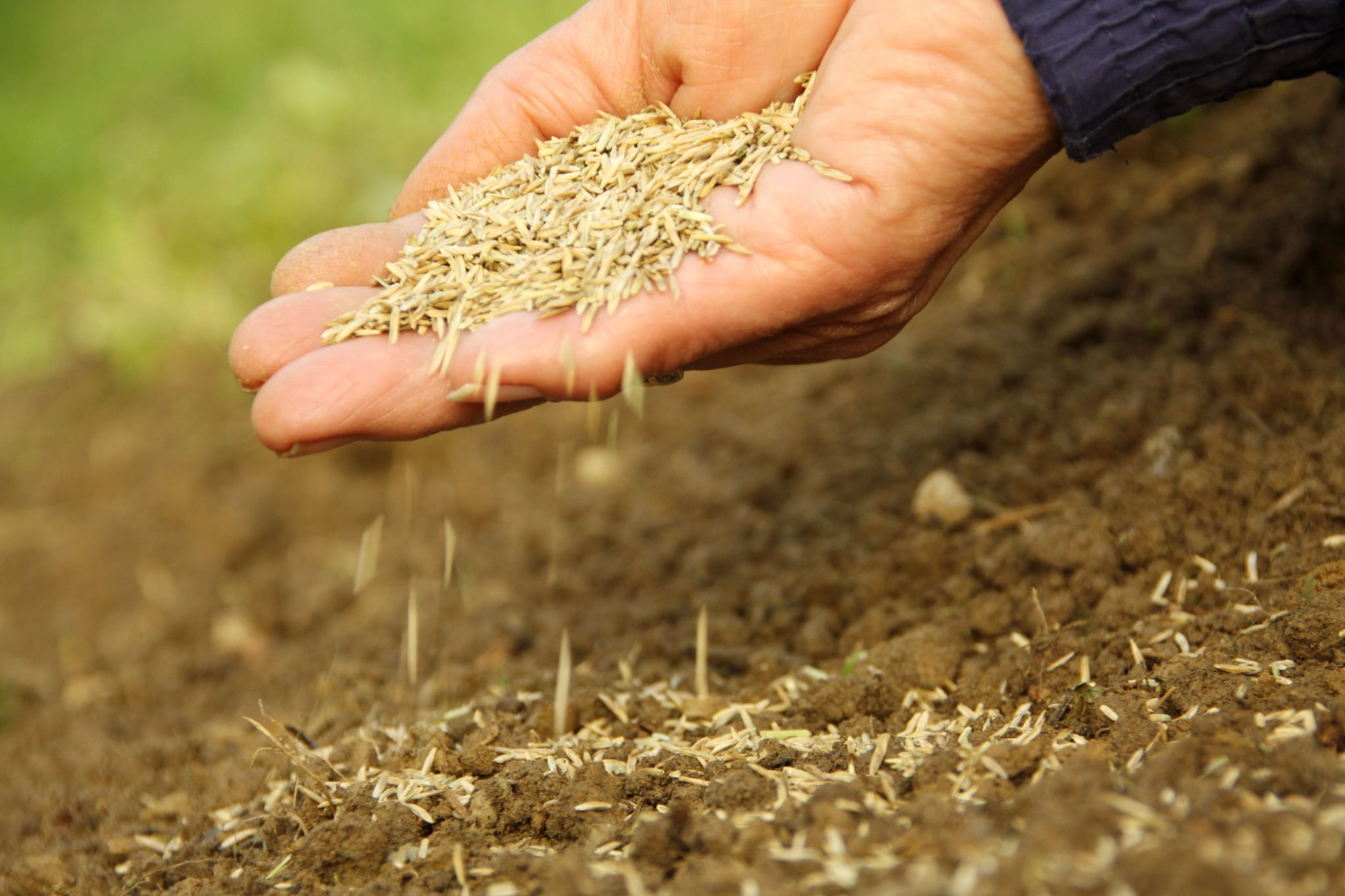Home>Gardening Tips and Tricks>Eco-Friendly Gardening>How Hydroponics Work


Eco-Friendly Gardening
How Hydroponics Work
Modified: January 22, 2024
Learn how hydroponics work and discover the benefits of eco-friendly gardening methods. Improve your growing experience with this informative guide.
(Many of the links in this article redirect to a specific reviewed product. Your purchase of these products through affiliate links helps to generate commission for Chicagolandgardening.com, at no extra cost. Learn more)
Table of Contents
- Introduction
- What is Hydroponics?
- Benefits of Hydroponics
- The Basic Components of Hydroponics
- Different Types of Hydroponic Systems
- How Nutrients are Delivered in Hydroponics
- Lighting in Hydroponics
- pH and EC Control in Hydroponics
- Common Plants Grown Using Hydroponics
- Challenges and Considerations in Hydroponics
- Conclusion
Introduction
Welcome to the world of hydroponics – a revolutionary method of gardening that offers a sustainable and eco-friendly alternative to traditional soil-based cultivation. Hydroponics, derived from the Greek words “hydro” meaning water and “ponos” meaning labor, involves growing plants in a nutrient-rich water solution without the use of soil.
This innovative gardening technique has gained tremendous popularity in recent years, as it provides numerous advantages over conventional gardening methods. By eliminating the need for soil, hydroponics maximizes space efficiency, reduces water usage, minimizes the risk of pests and diseases, and enables year-round cultivation. Whether you’re an urban gardener with limited space or a commercial farmer looking to boost productivity, hydroponics offers a sustainable and efficient solution.
In this comprehensive guide, we will explore the various aspects of hydroponics, including its benefits, components, different types of systems, nutrient delivery, lighting, pH and EC control, common plants grown using hydroponics, as well as the challenges and considerations associated with this method.
So, if you’re ready to take your gardening skills to the next level and embark on a journey of sustainable and efficient cultivation, let’s dive into the fascinating world of hydroponics!
What is Hydroponics?
Hydroponics is a method of growing plants that doesn’t rely on soil. Instead, it involves cultivating plants in a nutrient-rich water solution that provides all the essential elements for growth. The word “hydroponics” is derived from the Greek words “hydro” meaning water and “ponos” meaning labor, emphasizing the importance of water in this system.
In a hydroponic system, plants are grown in a controlled environment where the water, nutrients, and lighting conditions can be optimized for maximum growth and productivity. This method allows plants to receive the exact amount of nutrients they need, without competing with other plants for resources.
One of the key advantages of hydroponics is its versatility. It can be used to grow a wide range of plants, from leafy greens and herbs to fruits and flowers. This makes it a popular choice for both home gardeners and commercial farmers.
So, how does hydroponics work? In a basic hydroponic system, plants are typically placed in a growing medium that supports the roots while allowing them to access water and nutrients. The nutrient solution is then delivered directly to the plant roots through various methods such as a drip system, nutrient film technique, or deep water culture.
By providing plants with a controlled environment and a consistent supply of essential nutrients, hydroponics allows for faster growth and higher yields compared to traditional soil-based gardening. Additionally, this method eliminates the risks associated with soil-borne diseases and pests, offering a cleaner and more environmentally friendly approach to cultivation.
Now that we have a basic understanding of what hydroponics is, let’s explore the numerous benefits it offers over traditional gardening methods.
Benefits of Hydroponics
Hydroponics offers a multitude of benefits that make it an attractive option for gardeners and farmers alike. Let’s explore some of the key advantages of this innovative gardening method:
- Increased Growth Rate: In hydroponics, plants receive a constant supply of nutrients and water, allowing them to grow up to 50% faster compared to traditional soil-based cultivation. The controlled environment optimizes growth conditions, resulting in higher yields in a shorter period of time.
- Water Efficiency: Hydroponics uses significantly less water compared to traditional gardening methods. By recirculating and reusing the nutrient solution, water consumption can be reduced by up to 90%. This makes hydroponics a sustainable choice in regions with water scarcity or limited access to freshwater sources.
- No Pesticides or Herbicides: Since hydroponic systems are soil-less, there is no need for pesticides or herbicides to control weeds, pests, or diseases. This eliminates the risk of harmful chemicals entering the food chain and ensures clean and safe produce.
- Year-Round Cultivation: With hydroponics, you can grow crops year-round, regardless of the season or climate. By controlling the environmental factors such as temperature, humidity, and lighting, you can create ideal conditions for your plants to thrive, providing a consistent supply of fresh produce.
- Space Efficiency: Hydroponic systems can be designed to occupy minimal space, making them perfect for urban gardening or areas with limited land availability. Vertical growing systems and stacked trays allow for efficient use of vertical space, maximizing the number of plants that can be grown in a small area.
- Reduced Carbon Footprint: By utilizing energy-efficient LED lighting, optimizing nutrient delivery, and conserving water resources, hydroponics has a significantly lower carbon footprint compared to traditional farming methods. This makes it a more sustainable choice for environmentally conscious growers.
- Consistent Quality and Flavor: With hydroponics, you have full control over the nutrients your plants receive, resulting in more consistent quality and flavor compared to traditional farming. This is particularly beneficial for specialty crops and high-value produce.
These are just a few of the many benefits that hydroponics offers. Whether you’re a home gardener looking to grow fresh produce or a commercial farmer aiming to increase productivity, hydroponics provides a sustainable and efficient solution for your cultivation needs.
The Basic Components of Hydroponics
Hydroponics systems comprise several key components that work together to create an optimal growing environment for plants. Understanding these components is essential for successfully implementing hydroponics. Let’s take a closer look at each one:
- Growing Medium: The growing medium serves as a support system for the plants in a hydroponic system. It provides stability for the roots while allowing them to access water, nutrients, and oxygen. Some commonly used growing mediums include rockwool, perlite, vermiculite, coco coir, and clay pellets.
- Reservoir: The reservoir is a container that holds the nutrient solution in a hydroponic system. It is typically made of plastic or another non-reactive material to prevent any chemical interactions with the nutrient solution. The size of the reservoir depends on the number of plants being grown and the system’s water requirements.
- Nutrient Solution: The nutrient solution is a mixture of water and essential nutrients that plants need for optimal growth. It provides all the necessary macro and micronutrients in the right proportions. The nutrient solution is circulated or delivered to the plants through various systems, ensuring they have a constant supply of nutrients for healthy development.
- Water Pump: A water pump is used to circulate the nutrient solution throughout the hydroponic system. It helps maintain an even distribution of nutrients to all the plants and ensures proper oxygenation of the solution.
- Air Pump and Air Stone: An air pump and air stone are used to introduce oxygen into the nutrient solution. This helps prevent the roots from suffocating and promotes oxygenation of the growing medium. Adequate oxygenation is crucial for healthy root development and nutrient absorption.
Grow Lights: Grow lights are essential in hydroponics, especially when growing plants indoors or in low-light conditions. They provide the necessary light spectrum for photosynthesis to occur. LED grow lights are commonly used due to their energy efficiency, long lifespan, and ability to provide specific light wavelengths for different growth stages. PH and EC Meter: Monitoring and maintaining the pH and EC (electrical conductivity) levels of the nutrient solution is crucial in hydroponics. A pH meter measures the acidity or alkalinity of the solution, while an EC meter measures the concentration of dissolved salts, which indicates the nutrient level. Regular monitoring helps ensure the optimal nutrient uptake by the plants. - Timer: A timer is used to control the lighting and watering cycles in a hydroponic system. It helps maintain consistent and appropriate intervals for light exposure and nutrient delivery, ensuring plants receive the right amount of light and nutrients at specific times.
A proper understanding and integration of these basic components is crucial for setting up and maintaining a successful hydroponic system. By carefully selecting the right growing medium, maintaining the nutrient solution, providing adequate lighting, and monitoring the essential parameters, you can create an ideal environment for your plants to thrive in a soil-less cultivation system.
Different Types of Hydroponic Systems
Hydroponic systems come in various types, each with its unique characteristics and advantages. Understanding the different types will help you choose the most suitable system for your specific needs. Let’s explore some popular hydroponic systems:
- Deep Water Culture (DWC): DWC is one of the simplest and most beginner-friendly hydroponic systems. Plants are suspended in a nutrient-rich solution with their roots submerged in the water. An air pump and air stone provide oxygenation to the roots. DWC systems are cost-effective and require minimal maintenance.
- Drip System: In a drip system, nutrient-rich water is delivered to the plants through small tubes or emitters. The solution drips onto the growing medium, allowing the roots to absorb the nutrients. Drip systems offer flexibility in terms of plant spacing and nutrient delivery, making them suitable for a wide range of crops.
- Ebb and Flow System: Also known as a flood and drain system, ebb and flow systems alternate between flooding the growing tray with the nutrient solution and allowing it to drain. This cyclic flooding and draining ensure that the roots receive both water and oxygen. It’s a versatile system that works well for larger plants and can be automated.
- Nutrient Film Technique (NFT): NFT systems involve a thin film of nutrient solution flowing continuously over the roots, providing a constant supply of nutrients. The roots are exposed to air, allowing for optimal oxygenation. NFT is suitable for growing leafy greens and herbs but may not be ideal for larger plants with extensive root systems.
- Aeroponics: Aeroponic systems suspend the plants in air, with their roots misted with a nutrient solution. The fine mist allows for maximum oxygenation and nutrient absorption. Aeroponics is known for its efficiency and faster growth rates. However, it requires more precise control and regular maintenance.
- Wick System: Wick systems are the simplest and most low-tech hydroponic systems. They use a wick to draw nutrient solution from a reservoir to the growing medium. This system is inexpensive and easy to set up but may not be suitable for larger plants with higher water and nutrient requirements.
These are just a few examples of the numerous hydroponic systems available. Each system has its unique advantages and considerations. When choosing a hydroponic system, consider factors such as your space availability, desired crop, level of automation, and your experience level as a gardener.
It’s worth noting that many growers also employ hybrid systems that combine elements of different hydroponic systems to suit their specific needs. Experimentation and customization are key in finding the most effective hydroponic system for your gardening goals.
How Nutrients are Delivered in Hydroponics
In hydroponics, delivering the right balance of nutrients to the plants is crucial for their optimal growth and development. Unlike in soil-based cultivation, where plants extract nutrients from the surrounding soil, hydroponic systems rely on a carefully formulated nutrient solution to provide the essential elements for plant growth. Let’s explore how nutrients are delivered in hydroponics:
1. Nutrient Solution: The nutrient solution is a carefully controlled mixture of water and essential nutrients that plants need for healthy growth. The solution typically includes macronutrients such as nitrogen (N), phosphorus (P), and potassium (K), as well as micronutrients like iron (Fe), zinc (Zn), and manganese (Mn). Depending on the specific needs of different plants, the nutrient solution can be adjusted or supplemented.
2. Reservoir: The nutrient solution is stored in a reservoir, which serves as a central hub for nutrient distribution. The size of the reservoir depends on the number of plants being grown and the system’s water requirements.
3. Delivery Systems: Nutrients are delivered to the plants through various delivery systems, such as:
- Drip System: In a drip system, the nutrient solution is pumped through small tubes or emitters and dripped onto the growing medium, allowing the roots to absorb the nutrients.
- Nutrient Film Technique (NFT): In an NFT system, a thin continuous film of nutrient solution flows over the roots, providing a constant supply of nutrients.
- Aeroponics: In aeroponic systems, the nutrient solution is misted onto the roots, allowing for efficient nutrient absorption.
- Flood and Drain System: In a flood and drain system, the nutrient solution is periodically flooded into the growing tray and then drained out, ensuring that the roots receive both water and nutrients.
- Wick System: In a wick system, a wick, usually made of an absorbent material, draws the nutrient solution from the reservoir to the growing medium, providing a steady supply of nutrients.
4. pH and EC Control: Maintaining the pH level and electrical conductivity (EC) of the nutrient solution is crucial in hydroponics. The pH level affects nutrient availability and uptake by the plant roots. The EC level indicates the concentration of dissolved salts in the solution, reflecting the nutrient strength. Monitoring and adjusting these parameters ensure that the plants receive the right balance of nutrients.
Regular monitoring of the nutrient solution, including pH and EC levels, is essential to ensure that plants are receiving adequate nutrition. Adjustments can be made by adding more nutrients or diluting the solution as needed.
By carefully monitoring and managing the nutrient delivery system, hydroponic growers can provide their plants with the precise amounts and ratios of nutrients required for healthy growth, resulting in higher yields and healthier crops.
Lighting in Hydroponics
Lighting plays a crucial role in hydroponics, especially when growing plants indoors or in environments with limited natural sunlight. In hydroponic systems, artificial lighting is used to provide the necessary light spectrum for photosynthesis, promoting healthy plant growth and development. Let’s explore the importance of lighting in hydroponics:
1. Photosynthesis: Photosynthesis is the process by which plants convert light energy into chemical energy to fuel their growth. Light is a primary factor in photosynthesis, and without adequate light, plants cannot produce the energy they need to carry out essential functions like nutrient absorption and growth.
2. Light Spectrum: Different light wavelengths have varying effects on plant growth and development. In hydroponics, growers can use different types of artificial lights to provide the specific light spectrum plants need at different growth stages. Typically, blue light (wavelengths between 400-500nm) promotes vegetative growth, while red light (wavelengths between 600-700nm) stimulates flowering and fruiting.
3. Light Intensity: The intensity of light, measured as the amount of photons (light particles) reaching the plants per unit area, influences plant growth. In hydroponics, growers can adjust the light intensity to meet the specific requirements of different plant species. High-intensity light is generally needed for plants with higher light requirements, while low-intensity light may be suitable for shade-tolerant crops.
4. Duration and Photoperiod: The duration and timing of light exposure, known as the photoperiod, can affect plant growth and development, particularly in terms of flowering and fruiting. Certain plants require specific day lengths or interruptions in light exposure to trigger their reproductive cycles. By manipulating the photoperiod, growers can control the timing of flowering and optimize yields.
5. Types of Grow Lights: Several types of artificial lights can be used in hydroponics, including:
- LED (Light Emitting Diode): LED grow lights are energy-efficient and versatile, as they can be customized to emit the specific light spectrum plants require. They are long-lasting and produce low heat, making them suitable for indoor cultivation.
- High-Intensity Discharge (HID) Lights: HID lights, such as metal halide (MH) and high-pressure sodium (HPS) lamps, are known for their high light output. MH lamps emit a blue light spectrum ideal for vegetative growth, while HPS lamps produce a red-orange spectrum suitable for flowering and fruiting stages. HID lights are commonly used in larger-scale hydroponic operations.
- Fluorescent Lights: Fluorescent lights, including T5 and compact fluorescent lamps (CFL), are popular for smaller-scale hydroponic setups. They are energy-efficient and produce less heat, making them suitable for tight spaces and smaller plants.
Proper positioning of grow lights, based on the plant’s light requirements and growth stage, is essential to ensure optimal light distribution and minimize light loss.
Overall, lighting in hydroponics is a critical factor in achieving successful plant growth. By providing the right light spectrum, intensity, duration, and photoperiod, growers can replicate and optimize the natural light conditions necessary for healthy and productive crops.
pH and EC Control in Hydroponics
pH and EC control are vital aspects of hydroponic gardening that help ensure optimal nutrient uptake and plant growth. These parameters play a crucial role in maintaining a balanced nutrient solution and creating a favorable environment for roots. Let’s explore pH and EC control in hydroponics:
1. pH Control: pH refers to the acidity or alkalinity of water and nutrient solution. In hydroponics, maintaining the correct pH range is crucial because it affects the availability and uptake of nutrients by the plants. Most plants prefer a slightly acidic pH range between 5.5 and 6.5. A pH that is too high or too low can lead to nutrient deficiencies or toxicities.
To control pH in hydroponics, pH adjustment solutions such as pH up (alkaline) or pH down (acidic) are used. Regular monitoring of pH levels is essential as fluctuations can occur due to nutrient uptake, environmental factors, or system imbalances. It’s recommended to adjust pH levels before adding nutrients to the solution.
2. EC Control: Electrical Conductivity (EC) measures the concentration of dissolved salts, which indicates the nutrient strength in the solution. EC can be influenced by the type and amount of nutrients added to the reservoir. Monitoring and controlling EC levels are essential to prevent nutrient imbalances, burns, or deficiencies in the plants.
EC is measured using an EC meter, and the optimal range varies depending on the plant species and growth stage. The typical range is between 0.8 and 2.5 mS/cm (millisiemens per centimeter). Adjustments can be made by diluting or adding nutrients to reach the desired EC level. Always follow the guidelines provided by nutrient manufacturers and adjust as required based on plant response.
3. Nutrient Uptake and Availability: pH and EC levels directly influence nutrient uptake and availability to the plants. When pH levels are within the appropriate range, essential nutrients such as nitrogen (N), phosphorus (P), potassium (K), calcium (Ca), and magnesium (Mg) are more readily available to the roots. On the other hand, incorrect pH levels can lead to nutrient lockout or deficiencies.
4. pH and EC Monitoring: Regular monitoring of pH and EC levels is crucial in hydroponics. pH and EC meters should be calibrated and checked for accuracy regularly. pH should be checked daily, while EC measurements can be taken every few days, depending on plant response and growth.
By maintaining proper pH and EC levels, hydroponic growers can ensure optimal nutrient uptake, prevent nutrient imbalances, and promote healthy plant growth. It’s important to note that different plant species may have specific requirements, so it’s essential to research the ideal pH and EC ranges for the specific crops you are growing.
Common Plants Grown Using Hydroponics
Hydroponics offers a versatile and efficient method of cultivating a wide range of plants without soil. This soilless technique allows for optimal nutrient delivery while minimizing the risk of pests and diseases. Here are some common plants that thrive in hydroponic systems:
- Leafy Greens: Hydroponics is particularly well-suited for growing leafy greens such as lettuce, spinach, kale, and Swiss chard. These crops have shallow root systems and grow quickly, making them an ideal choice for hydroponic gardening. Leafy greens in hydroponics benefit from the controlled environment, resulting in crisp and flavorful yields.
- Herbs: A variety of herbs can be successfully grown in hydroponic systems. Basil, cilantro, parsley, mint, and dill are popular choices. Hydroponic herb gardens offer a convenient and year-round supply of fresh herbs for culinary use. The controlled environment ensures vigorous growth and potent flavors.
- Tomatoes: Tomatoes are well-suited for hydroponics, especially indeterminate varieties that continue growing and producing throughout the season. With proper support, pruning, and nutrient delivery, hydroponic tomatoes can yield abundant harvests of juicy and flavorful fruits.
- Cucumbers: Cucumbers thrive in hydroponic systems, benefiting from the controlled conditions and vertical growing options. Trellising or using a cucumber support system helps maintain proper vine growth and optimal fruit production. Hydroponic cucumbers are known for their crisp texture and sweet flavor.
- Strawberries: Hydroponic strawberries offer the advantage of year-round cultivation and higher yields compared to traditional soil-based methods. These plants have shallow root systems, making them well-suited for NFT or vertical hydroponic towers. Hydroponic-grown strawberries often have a sweeter taste and superior texture.
- Peppers: Both sweet and hot pepper varieties can thrive in hydroponic systems. Peppers benefit from consistent nutrient delivery and controlled temperatures. Hydroponic-grown peppers tend to have higher yields and larger fruits, with vibrant colors and intense flavors.
These are just a few examples of the many plants that can be successfully cultivated in hydroponic systems. Other popular choices include beans, peas, eggplants, microgreens, and even flowering plants like orchids and roses. Some hydroponic gardeners also experiment with exotic or specialty crops.
It’s important to note that each plant has specific requirements in terms of lighting, nutrient levels, and environmental conditions. Researching the specific needs of the plants you intend to grow will help optimize their growth and ensure successful yields.
With hydroponics, the possibilities are vast, allowing you to enjoy a diverse selection of fresh produce and even explore unique plants that may be challenging to grow in traditional soil-based gardens.
Challenges and Considerations in Hydroponics
While hydroponics offers numerous benefits and exciting possibilities, it’s important to be aware of the challenges and considerations that come with this method of gardening. Here are some key factors to keep in mind:
1. Initial Investment: Setting up a hydroponic system requires an initial investment in equipment, such as grow lights, pumps, reservoirs, and nutrient solutions. However, the long-term savings in water, space, and potentially increased yields can offset the upfront costs over time.
2. System Complexity: Hydroponic systems can vary in complexity, from simple systems like deep water culture to more advanced setups like aeroponics. Mastering the intricacies of these systems and maintaining the appropriate balance of nutrients, pH, and EC levels may require a learning curve and ongoing monitoring.
3. Water Quality: Hydroponics relies on a reliable source of clean water. Water quality is essential, as it directly affects the health of plants. Tap water may contain high levels of dissolved minerals, chlorine, or contaminants that can impact the nutrient solution. Pre-treating or filtering the water may be necessary to ensure optimal plant growth.
4. Temperature and Humidity: Maintaining the right temperature and humidity levels is crucial for successful hydroponics. High temperatures can lead to increased evaporation and nutrient imbalances, while low temperatures can slow plant growth. Proper ventilation, climate control, and monitoring are necessary to maintain the optimal environment for plants.
5. Disease and Pest Control: Although hydroponics eliminates many of the soil-borne diseases and pests associated with traditional gardening, it is not entirely immune to such issues. Strict hygiene practices, proper sanitation, and regular monitoring are essential to prevent the spread of pathogens and minimize the risk of pests impacting plant health.
6. Power Outages or Equipment Failures: Dependent on electricity to power lighting, pumps, and other equipment, hydroponic systems may be vulnerable to power outages or equipment failures. Backup power sources or systems should be considered to ensure continuous operation and prevent potential crop loss.
7. Plant-Specific Needs: Different plants have specific requirements for light, nutrition, and growth conditions. Some plants may not adapt well to hydroponic environments due to their roots’ sensitivity or their need for extensive space. Understanding the specific needs of each plant variety is crucial to ensure successful cultivation.
Despite these challenges, many hydroponic growers find innovative solutions and achieve exceptional results. Through research, experimentation, and experience, the challenges can be overcome, leading to productive and rewarding hydroponic gardens.
It’s important to stay informed, learn from other growers, and continually adapt your techniques to achieve the best results. With proper planning, attention to detail, and a willingness to troubleshoot, hydroponics can offer a sustainable, efficient, and rewarding method of gardening.
Conclusion
Hydroponics is a fascinating and innovative method of gardening that offers numerous benefits for both home gardeners and commercial farmers. By utilizing a soil-less approach, hydroponics maximizes space efficiency, conserves water, minimizes the risk of pests and diseases, and enables year-round cultivation. With the ability to control environmental factors such as lighting, pH, and nutrient delivery, hydroponics empowers growers to optimize plant growth and achieve higher yields.
Throughout this guide, we have explored the various aspects of hydroponics, including its definition, benefits, components, different types of systems, nutrient delivery, lighting considerations, pH and EC control, and common plants grown in hydroponic systems. We have also highlighted the challenges and considerations that come with this method of gardening.
While hydroponics may present initial investment costs and require attention to detail, with knowledge, experience, and dedication, you can overcome these challenges and reap the rewards of bountiful harvests, sustainable practices, and the satisfaction of growing your own fresh produce.
Whether you are a small-scale urban gardener or a commercial farmer looking to maximize productivity, hydroponics provides a viable and eco-friendly solution. The versatility of this method allows for the cultivation of a wide range of plants, from leafy greens and herbs to tomatoes, cucumbers, and strawberries.
As you embark on your hydroponic journey, continue to explore and expand your knowledge. Experiment, tailor your approach to meet specific plant requirements, and don’t be afraid to adapt and innovate. Stay attuned to the latest advancements in hydroponic technology and techniques, and connect with fellow hydroponic enthusiasts to share experiences and learn from one another.
Now armed with a comprehensive understanding of hydroponics, you are well-equipped to embark on your own hydroponic gardening adventure. Embrace the sustainable and efficient nature of hydroponics and discover the joy of growing plants in a soil-less environment.
So, what are you waiting for? Dive into the world of hydroponics and experience the benefits of this revolutionary gardening method firsthand. Happy hydroponic gardening!










